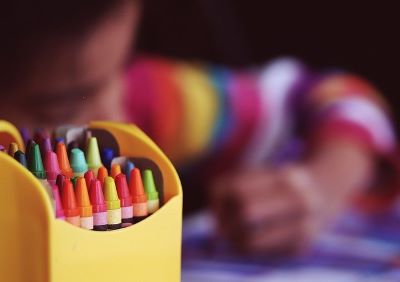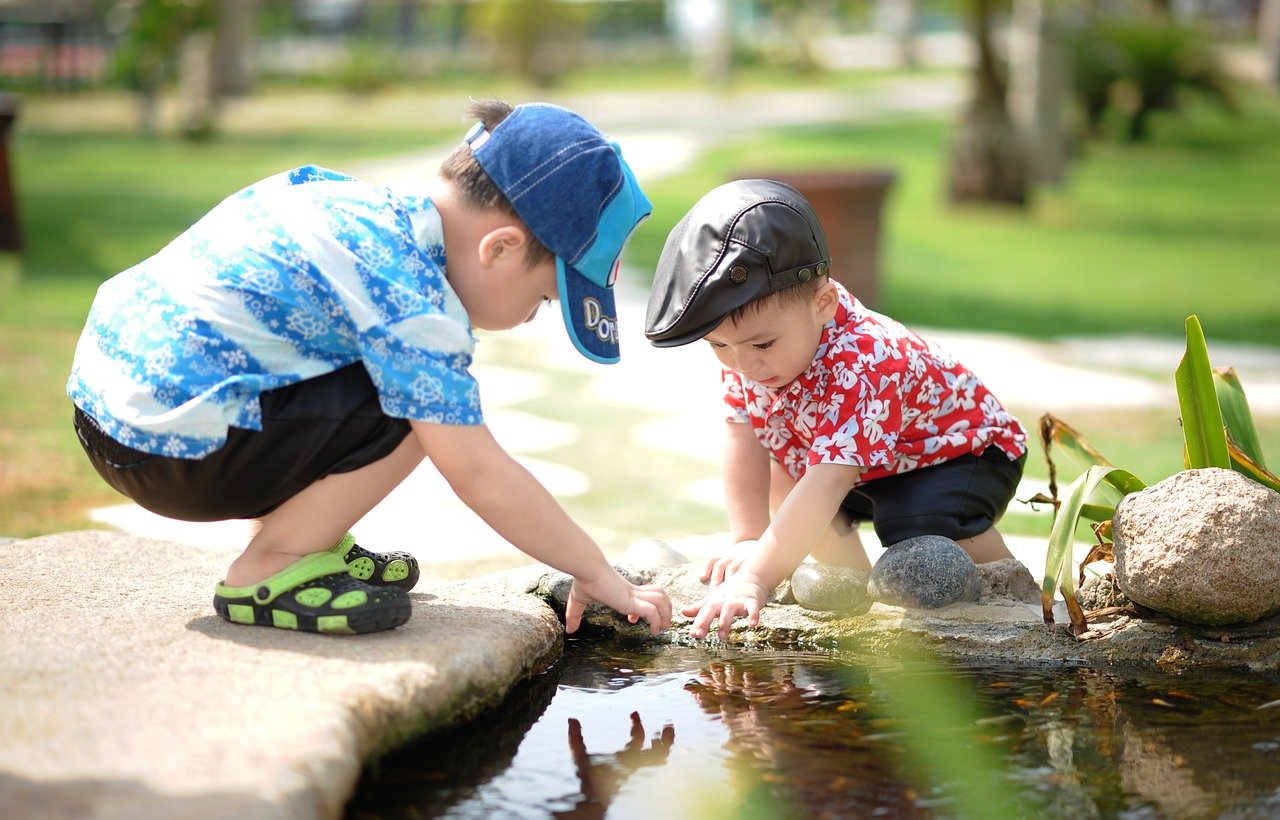 We all have the capacity to be creative, but we sometimes need a nudge in the right direction to spark an idea. Imagination is key – a stick can become a sword; a hairbrush transforms into a microphone; a blanket draped over two chairs is a den. Creativity emerges through children’s exploration, curiosity and following their own interests. Their ideas promote skills such as problem-solving, redefining space and materials, communication with others involved in their play and negotiating skills to enable their creative vision. Creative connections are made while children play, stimulating opportunities for self-expression and building social relationships. Being creative is about exploring, not being afraid to make mistakes and using ideas and resources in new ways. This not only supports sharing experiences with others but widens children’s ability to feel able to participate because there are no right or wrong answers and there is no pressure to conform or respond in a certain way.
We all have the capacity to be creative, but we sometimes need a nudge in the right direction to spark an idea. Imagination is key – a stick can become a sword; a hairbrush transforms into a microphone; a blanket draped over two chairs is a den. Creativity emerges through children’s exploration, curiosity and following their own interests. Their ideas promote skills such as problem-solving, redefining space and materials, communication with others involved in their play and negotiating skills to enable their creative vision. Creative connections are made while children play, stimulating opportunities for self-expression and building social relationships. Being creative is about exploring, not being afraid to make mistakes and using ideas and resources in new ways. This not only supports sharing experiences with others but widens children’s ability to feel able to participate because there are no right or wrong answers and there is no pressure to conform or respond in a certain way.
Being creative, developing ideas and turning them into something meaningful relies on making judgements about the value of creative thinking for children. You have to be flexible and adaptable, especially if the dining room furniture is suddenly transformed into a bear’s cave! But it is not only about the way a space in the home or garden is transformed. Allowing children to follow their own agenda requires adults to let children take the lead, stand back when help is not required and have confidence that creative thinking is important to children’s learning and development.
For any creativity to emerge there needs to be a nourishing and nurturing environment, promoting a culture of openness to new concepts and a tolerance for ambiguity.Creative play can also reveal interesting insights into children’s thinking and their concerns. They might express some of their anxieties through an imaginary world; for example, choosing to roleplay being a doctor or nurse looking after a family, might be an indication of their inner thoughts relating to COVID-19. When children are left to their own devises, they attach meaning to their play that has an immediate significance for them. Therefore, it is important to listen, and only ask appropriate open-ended questions when it feels right to support children to express themselves.
Perceptions of creativity vary according to experiences and interpretation of what being creative means and what it involves. But for any creativity to emerge there needs to be a nourishing and nurturing environment, promoting a culture of openness to new concepts and a tolerance for ambiguity. This can be quite challenging, especially in a home environment. However, entering into the spirit of play, and providing imaginary responses enables children to have a sense of freedom in what they are doing. Trying to control play hinders children’s ability to fully engage. Their responses become influenced by what they think you want to hear or how you would like them to react. Being present but not taking over is a skill and should be judged by children’s ability and willingness to continue their play with or without you.
Top tips:
- Allow children to have a sense of freedom in what they do within the inside or outside space.
- Follow children’s lead and don’t try to change the game, even if you feel a bit silly.
- Listen to the messages children convey through their creative play; they might reveal concerns they have.
- Children are learning and developing when they are engaged in play so the more opportunities you can provide, the better.




Rate and Review
Rate this article
Review this article
Log into OpenLearn to leave reviews and join in the conversation.
Article reviews